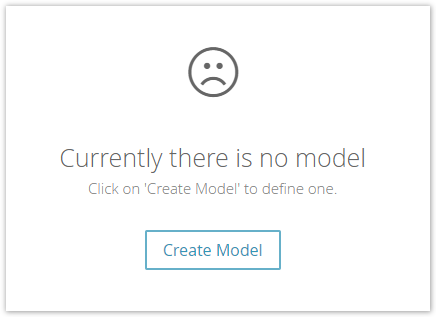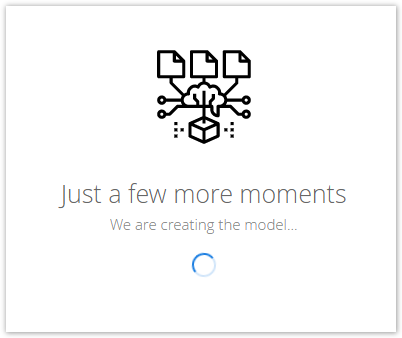After a successful product annotation you are able to create and train a machine learning model. This model determines all annotations for all products by itself based on user-annotated products. A part of these annotation are the training set. Later the full user annotations are compared with the model annotations to get the model prediction accuracy. Or more precisely: the more the model predicts correctly the higher is the accuracy.
Table of Contents:
To create a model you need at least one product annotation for the new attribute. Note that for a good prediction we need at least round about 10 percent of products to be annotated.
In the Annotation view on the right-hand side you see a text that currently no model exist and a button to create a model.

Clicking on the "Create Model" button opens a modal window. In this window you have to set the training attributes for this model.
Basically, the following scenario applies: Example: |
To find the attributes you can use the several filter settings. You can search for
All selected attributes are displayed as tags below the attribute list. With the aid of the "x" icon all attributes can be removed again.
Some attributes are preselected when you open the modal window. These attributes are the mapped core attributes of the data feed. In general not all of them are useful for the model creation. Hence, please make sure to check all selected attributes before clicking on the "Start" button. |
If you click on the "Start" button the model creation process is triggered. You should see the following processing screen:

After the model was successfully created a model card is shown. It contains the following UI elements:
If you are not happy with the prediction results of the model, it is possible to retrain it to get better results. Furthermore for some model states (invalid and incompatible) a retraining is mandatory to use the attribute in your Product Guide.
The structure of the modal window is exactly the same as for the model creation. The only difference is that the selected attributes are the last used training attributes. After adapting your changes and clicking the "Start" button, the model will be retrained. Afterwards you can look at the performance stats and value predictions to see if the adaptations was worth it.
You cannot revert the model to an older state. That means after the retraining the old model status is gone for good. |
You model can reach different state levels during its existence. Each level is worse than the upper one.
Furthermore a state can only get worse for one or multiple levels, but not vice versa. The only level it can reach upwards again is the state valid.
The annotation model is conformal with the annotated values and product data.
This state should always the aim.
The model is still valid, but there are new annotation values which could change the model predictions.
You should consider to retrain the model with the new information.

The model is invalid due to e.g. new/less synthetic attribute values or different attribute properties.
In this case a model retraining is mandatory. Otherwise the attribute cannot be applied to the data respectively used in the Concept Board.

The model is incompatible due to e.g. lost training attributes in the data feed.
To use the created attribute in the Product Guide, the model has to be retrained.
